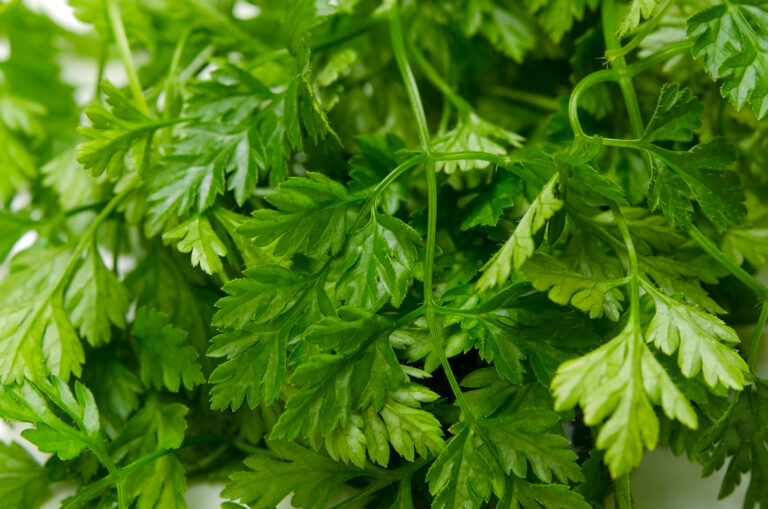Chervil (Anthriscus cerefolium), with its delicate and aromatic leaves, is a delightful herb that has been cherished by cooks and gardeners for centuries.
This herb is native to the Middle East region and has since spread its culinary influence worldwide. Chervil’s feathery green foliage resembles parsley, but its subtle flavor boasts hints of anise and parsley combined. It is often used fresh as a garnish or added towards the end of cooking to preserve its delicate taste.
With its unique charm and versatile nature, chervil adds a touch of elegance to salads, soups, and sauces, making it a cherished ingredient in the kitchen.
Care
Chervil – similarly to Mustard – is a real friend to beginner gardeners because it barely needs any care. Just keep in mind these:
- Water: To ensure optimal growth, it is important to maintain a consistent moisture level in the soil without causing waterlogging. About an inch of water in a week should be enough, unless the weather is especially hot and dry.
- Soil: For chervil to thrive, provide humus-rich, loamy soil with good drainage, add compost or well-rotted manure if needed, and maintain a slightly acidic to neutral pH level of 6.5 to 7.0.
- Temperature: prefers partial shade and cooler temperatures below 65ºF (18ºC) to prevent wilting or bolting, which affects the flavor of its leaves.
- Light: thrives in part shade for most regions, tolerates part sun in cooler areas below 65°F, and prefers full shade in regions with temperatures exceeding 80°F.
Propagation
Chervil grows easily from seed indoors or outdoors, thriving in cool, partly shaded areas in the ground or in deep containers. It has a rapid growth rate, allowing for the harvesting of tender young leaves in as little as nine weeks.
Common Pests
Frequently Asked Questions
Chervil is typically cultivated as an annual in our climate, although it is a perennial plant. It has a tendency to self-sow and may persist through mild winters, while in summer, it produces charming umbels of small white flowers.
What is the lifespan of chervil?
Chervil is typically grown as an annual herb, meaning it completes its life cycle within one year. However, under favorable conditions, it can sometimes self-sow and persist for multiple years, acting as a short-lived perennial.
Is chervil difficult to grow?
Chervil is generally considered relatively easy to grow, making it a suitable herb for both beginners and experienced gardeners. It has moderate care requirements and can thrive in the right conditions. However, it is worth noting that chervil has specific preferences for cool temperatures and partial shade, which may require some attention to ensure optimal growth.
How tall does chervil get?
Chervil typically grows to a height of around 12 to 24 inches (30 to 60 centimeters) under favorable growing conditions.

